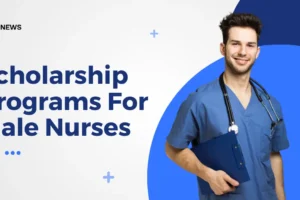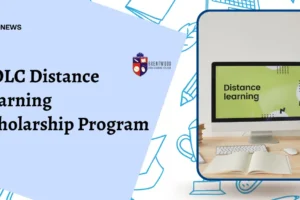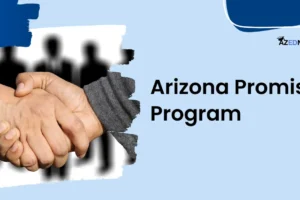Are you looking for a way to reduce the financial strain of returning to school? Consider a $38000 Grant To Go Back To School designed to cover tuition, books, and living expenses. Tailored for returning students or career changers, researching eligible grants and consulting the school’s financial aid office can provide essential application guidance.
Table of Contents
As we can see in the ongoing technological and scientific advancements, getting a college degree or vocational training post-high school has become a necessity for securing well-paying employment opportunities. Unlike the past, where individuals immediately entered the workforce after high school and often stayed with the same company until retirement, the current landscape is more competitive.
However, the escalating costs of college tuition and textbooks present a significant obstacle for those in low-income households and the unemployed who aspire to pursue further education.
Recognizing the significance of a diverse student body, many universities, and colleges offer an inclusive environment for pursuing courses for adults. It offers a well-rounded educational experience. Additionally, various foundations, organizations, and the federal government are dedicated to assisting individuals who are looking for a $38000 Grant To Go Back To School and aspire to attain a degree but encounter financial obstacles in realizing their dreams and goals.
Key Takeaways
- There are grants available to help you pay for school, even if you are an adult going back to school.
- You can get a federal grant by completing the FAFSA application. There are also grants from private companies and foundations.
- There are grants specifically for women returning to school.
- To apply for grants, you will need to meet certain requirements, such as having good grades or showing financial need.
- Applying for grants can be challenging, but it is worth it because they can help you pay for school.
What are Return To School Grants?
Scholarships and grants allow individuals returning to school to get financial awards that can be used to cover educational expenses. These are presented to students or adults who have met specific eligibility criteria. Recipients are not obligated to repay these awards upon completing their education. To support non-traditional students, minorities, or those pursuing specific majors, numerous foundations extend grants and scholarships to alleviate the financial burden of tuition.
So let’s understand, can we get a $38000 Grant To Go Back To School? Well, the amount offered as a grant depends upon the organization or institution which offers it. So, the amount can vary according to the same. It might be possible for individuals with more financial needs to get the reward of $38000 for their educational expenses. However, there are a few things that need to be accomplished.
Follow FAFSA Process to Access $38000 Grant To Go Back To School
If you want a return to education, your initial focus should be on completing the Free Application for Federal Student Aid (FAFSA). Completing the FAFSA not only aligns you with federal aid options but also opens doors to various educational institutions that accept FAFSA, including online schools. Both the U.S. federal government and educational institutions necessitate a thorough review of your FAFSA to provide you with access to federal grants, loans, and work-study programs.
Federal aid does not impose age restrictions, All adult students undergo the same FAFSA process as high school seniors. Even if you do not meet the eligibility criteria for grants, it is recommended to complete the FAFSA to access federal student loans.
Federal loans typically come with lower interest rates and more favorable repayment terms compared to private student loans, enabling you to achieve cost savings. Some grants give you rewards similar to your $38000 Grant To Go Back To School, these are:
1. Private Grants
Corporate grants are a form of financial support offered by businesses and corporations to endorse various causes, with a particular emphasis on education. These grants may be targeted toward specific fields of study, student demographics, or geographic areas. Corporate grant programs, such as Google’s Computer Science Education Grants and Bank of America’s Student Leaders Program, serve as prime examples.
For students pursuing a degree that aligns with a company’s mission or values, corporate grants can be a valuable source of financial assistance. To identify corporate grants, students can investigate grant opportunities on specific company websites or use online databases such as the Foundation Center.
2. Foundation or Institutional Grants
Foundation grants are monetary awards provided by nonprofit organizations and foundations to fund the needs of adults who want to go to school, including education. These grants may be customized to specific fields of study, student groups, or geographic locations.
Exemplary instances of foundation grant programs include the Bill and Melinda Gates Foundation’s Postsecondary Success Program and the Jack Kent Cooke Foundation’s Undergraduate Transfer Scholarship. Foundation grants offer an excellent financial support option for students pursuing degrees that align with a foundation’s mission or values.
To explore foundation grants, students can search for opportunities on the websites of particular foundations or utilize online databases like the Foundation Center.
Federal Grants
The Department of Education in the United States offers various grants to students pursuing four-year programs in colleges, universities, community colleges, and career schools. For those seeking to advance their education, several grants are available:
1. Federal Pell Grant
The Federal Pell Grant is typically awarded to undergraduate students who have not earned a bachelor’s or graduate degree. This need-based grant caters to students with exceptional financial needs, including those in post-baccalaureate teacher certification programs.
Eligibility is determined through the annual completion of the Free Application for Federal Student Aid (FAFSA) form until graduation or the cessation of financial aid requirements. How much you get from the grant depends on things like:
- Expected Family Contribution (EFC): Calculated based on family income, assets, and benefits, a higher EFC results in a lower grant amount.
- Cost of Attendance (COA): A fixed amount set by the college for the enrolled program, influencing the eligibility for need-based aid.
- Student Status: The grant amount changes based on whether you’re a full-time or part-time student.
- Completion of Course: Full attendance for the entire program is necessary for the receipt of full grants.
If a school participates in the Federal Pell Grant program, students can receive grants in the form of reduced tuition costs, direct payment, or a combination of both. Eligibility ceases after earning a baccalaureate degree, a first professional degree, or utilizing 12 terms (approximately six years) of grant eligibility.
2. Federal Supplemental Educational Opportunity Grant (FSEOG)
The FSEOG is a financial aid program managed directly by the school you’re enrolled in. To apply for FSEOG, enrollment in a school participating in these grant programs is necessary.
After completing the FAFSA form, the college assesses financial need and awards FSEOG to students with the most significant financial need. The amount, ranging from $100 to $4,000 per year, depends on factors such as financial need, other aids received, scholarships, and the availability of funds at the school.
Unlike the Federal Pell Grant, which is granted directly to students, FSEOG is administered by the financial aid office at the school. Funds can be received in the student account through direct payment or a combination, typically once per term (semester, trimester, quarter).
For schools without a term-based system, funds are disbursed at least twice a year. Application deadlines for campus-based funds can be checked on the college’s website.
Are there any Grants for Women Returning to School?
Numerous excellent grants and scholarships cater to women seeking to resume their education. Beyond federal government initiatives, private organizations are instrumental in providing support to adults aspiring to pursue higher education. For women enrolled in full-time programs, here are some noteworthy opportunities:
- The American Association of University Women Scholarship: Interested individuals can apply for these student grants through the association’s state and local branch offices. The Grant amounts vary based on the region.
- The Philanthropic Educational Organization: This organization extends need-based and merit-based scholarships, grants, and student loans specifically for women. Financial assistance programs are tailored for women in the final stages of high school. The awarded amount is contingent on the decisions of the organization’s local chapters, influenced by the region and chosen program.
- The Talbot Scholarship Foundation: Women seeking financial assistance for college attendance in the U.S. or Canada can pursue this scholarship. The Eligibility for the grant requires completion of at least two semesters in an undergraduate program.
- The Emerge Scholarship Fund: Geared towards providing grants and scholarships to women who had to interrupt their education due to financial constraints but now wish to resume higher education. Merit-based awards are available, particularly for women who have demonstrated significant contributions to their communities.
- The AARP Foundation Scholarship: Designed for women aged over 50 pursuing education in a vocational school. The rewards Specifically address the financial challenges faced by women in their families and workplaces.
- The Jeannette Rankin Women’s Scholarship Fund: The main motive of the grants or scholarships is to financially support women aged 35 or older from low-income groups. Applicants must be actively pursuing a degree or vocational training.
How to apply for the grants?
- Explore Available Grants: Begin your grant application journey by researching opportunities aligned with your field of study, educational level, and eligibility criteria. Utilize online search engines, consult your prospective school’s financial aid office, and investigate professional organizations in your chosen field.
- Review Eligibility Criteria: Carefully examine the eligibility requirements of potential grants to ensure alignment with your qualifications. Some grants may have specific conditions related to academic achievements, financial need, or other factors.
- Compile Necessary Documents: Gather essential documents, such as transcripts, personal statements, and letters of recommendation, required by most grant applications. Ensure that all collected documents are current, accurate, and fulfill the specified criteria.
- Complete the Application: Follow application instructions diligently, providing all required information. Be attentive to deadlines, as many grants impose strict application timelines.
- Submit the Application: Once the application is complete, submit it according to the specified instructions. Note that application processes may vary, with some grants requiring online submissions and others opting for paper applications.
Documents Required for $38000 Grant To Go To School
While specific document requirements vary by grant, commonly requested items include:
1. Transcripts:
Most grants mandate the submission of transcripts from all previously attended colleges and universities.
2. Personal Statement:
Make sure to include a personal statement outlining your academic and career goals, along with reasons for applying for the grant.
3. Letters of Recommendation:
The applicants need to provide recommendations from professors, employers, or professionals endorsing their academic capabilities and potential.
Financial Information: Some grants may request details about your income and assets to assess financial needs.
Challenges in the Grant Application Process
Applying for grants to support higher education is not easy, various challenges need to be faced by the students. These are:
1. Competition:
Grants often have limited funds, leading to intense competition among applicants. This heightened competition can make it challenging for students to secure grant funding.
2. Eligibility Requirements:
Grants typically come with specific criteria related to academic achievement, financial need, or other factors. Meeting these requirements may prove challenging for some students.
3. Application Complexity:
The grant application process is known for being complex and time-consuming. Students must gather extensive documentation and provide detailed information about their academic and personal backgrounds.
4. Deadlines:
Grant applications commonly have strict deadlines, creating challenges for students managing various academic and personal responsibilities. Meeting these deadlines can be particularly demanding.
5. Limited Availability:
Some grants may be restricted to students in specific fields of study or attending particular schools. This limitation can present challenges for students who don’t meet the specified criteria.
6. Uncertainty:
Even after completing the application process, there’s uncertainty about whether students will receive funding. This uncertainty makes it challenging for students to plan for educational expenses and future goals.
FAQs
1. How to get scholarships?
Scholarships are acquired through meeting or surpassing particular criteria established by the scholarship provider. Merit-based scholarships are given for exceptional academic performance or a combination of academics and a distinctive skill, trait, or passion. Additionally, certain scholarships are awarded based on demonstrated financial need.
2. Can I get a 100% free grant to go to school?
A scholarship that encompasses all costs, often termed a full-ride scholarship, is a grant that covers not only tuition fees but also various other expenses associated with college, including accommodation, travel, insurance premiums, meals, and potentially even living costs.
3. Can I apply for two scholarships to go to school?
Yes, typically, you can apply for multiple scholarships simultaneously, but meeting specific eligibility criteria is necessary to do this.
4. What are common scholarship eligibility criteria?
Candidates entering technical or professional courses without participating in competitive examinations are eligible for scholarships. However, they are required to have attained a minimum of 50% marks at the higher secondary or graduation level.
5. How can I get money by going back to school?
The first step is filling out the Free Application for Federal Student Aid (FAFSA). You must complete this form for the U.S. government and schools to review. With an approved FAFSA, you gain access to federal grants, loans, and work-study programs. These funds can help pay for your classes.
6. Do students pay back federal grants?
A Federal Pell Grant is money for college that you don’t usually have to pay back. However, there are some situations where you may need to repay all or part of the grant. A Pell Grant is different from a student loan because it doesn’t typically require repayment.
Conclusion
Grants are like presents that can really help adults return to school. They’re crucial because they pay for school fees, books, and other expenses. Applying for grants might feel challenging, but here’s the exciting part: there’s a unique $38000 Grant To Go Back To School. When you get the right support and make good plans, this grant becomes a clever investment in your future education.
For adult learners who are looking for a return to school, exploring available grants and other forms of financial aid is essential. Through meticulous planning and research, individuals can pinpoint the funding necessary to realize their educational aspirations.
Recognizing that returning to school demands a significant investment of time, money, and effort is crucial. Nevertheless, this investment can result in personal and professional growth, unlocking new opportunities and a more promising future. Whether the goal is career advancement or the pursuit of a lifelong passion, grants stand as valuable tools in achieving these objectives.












Add Comment